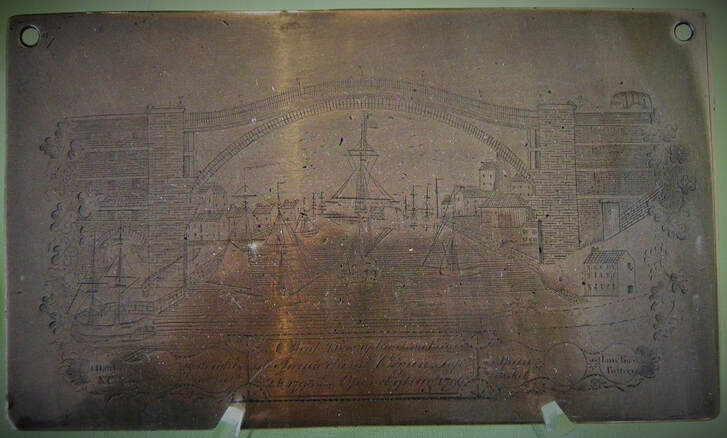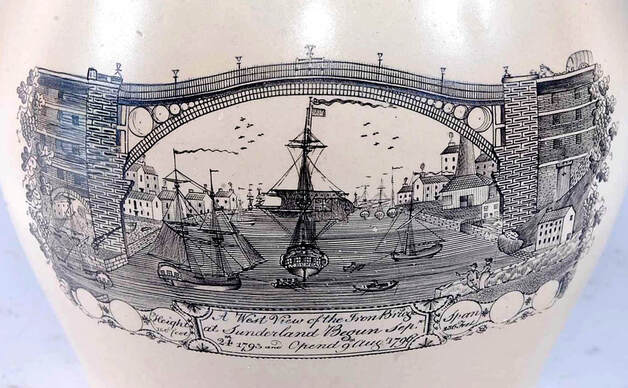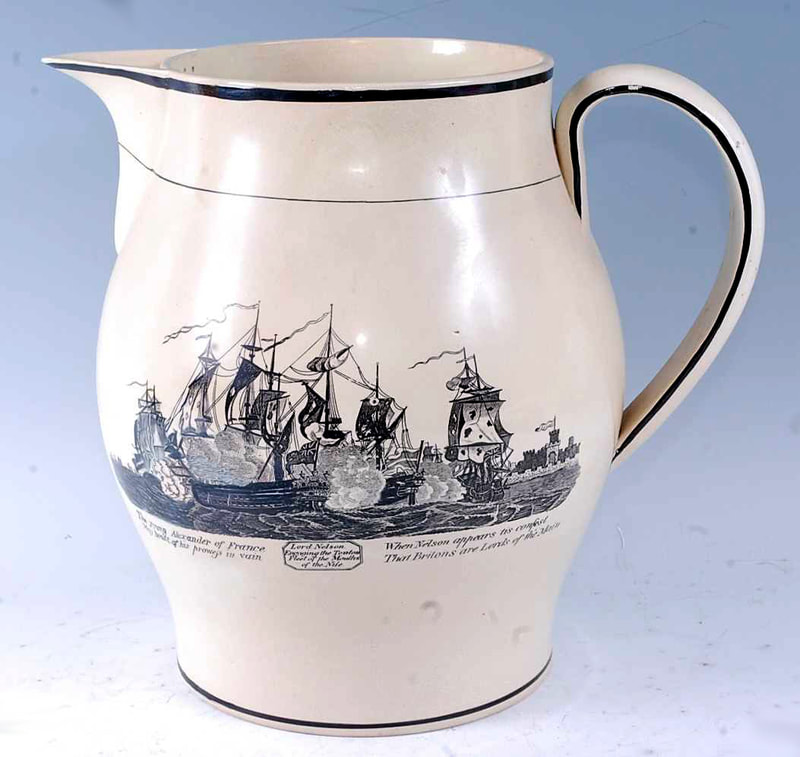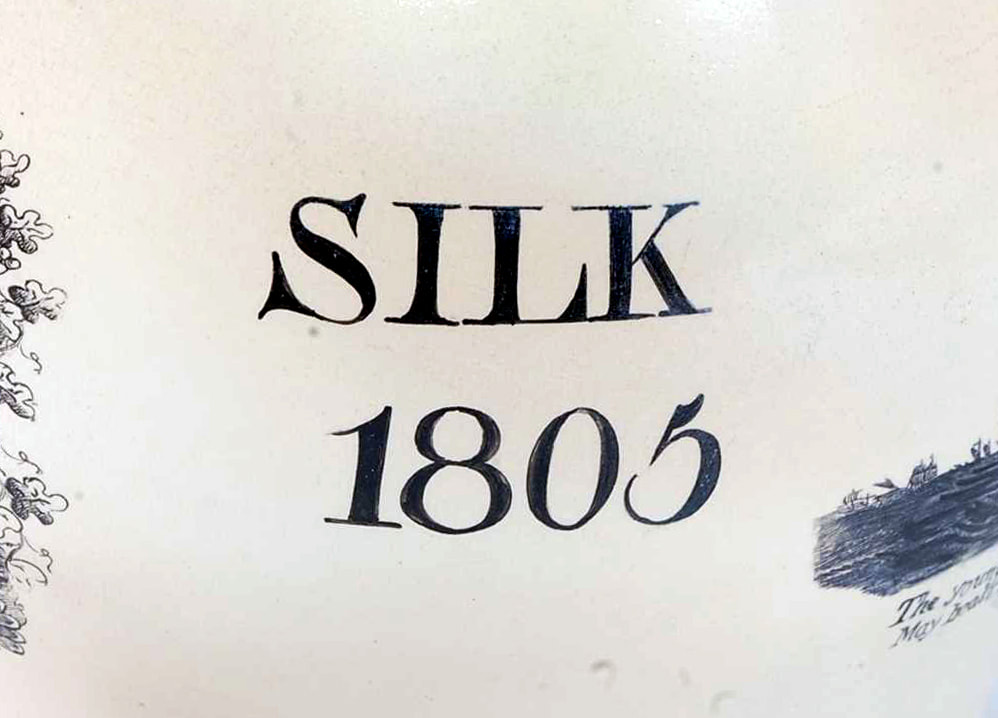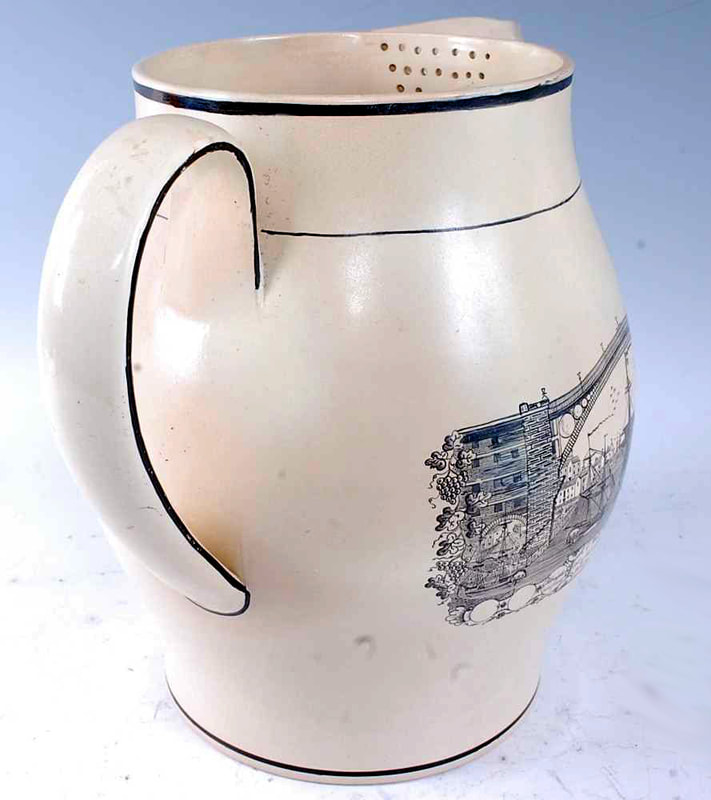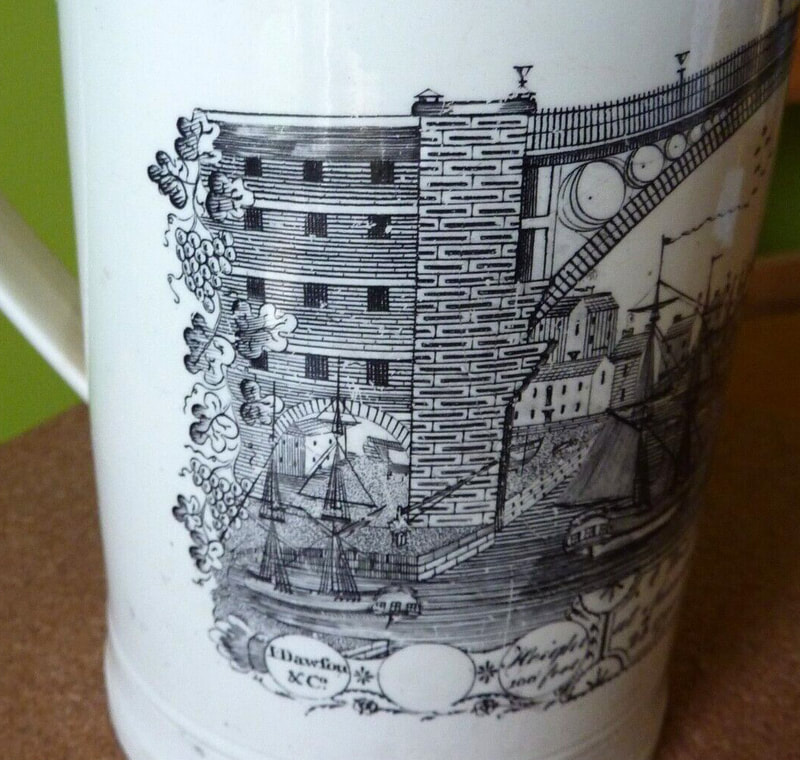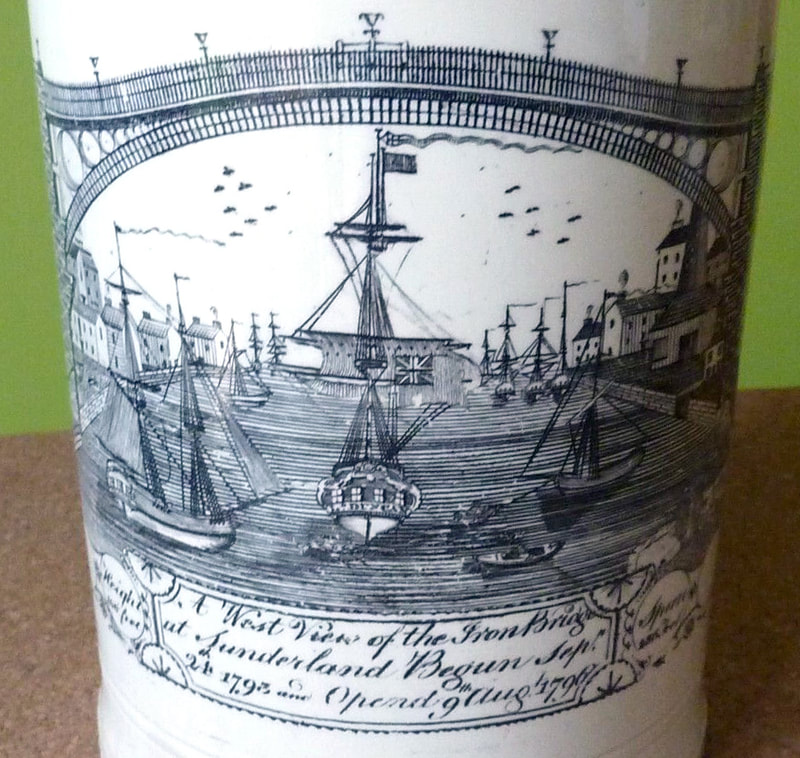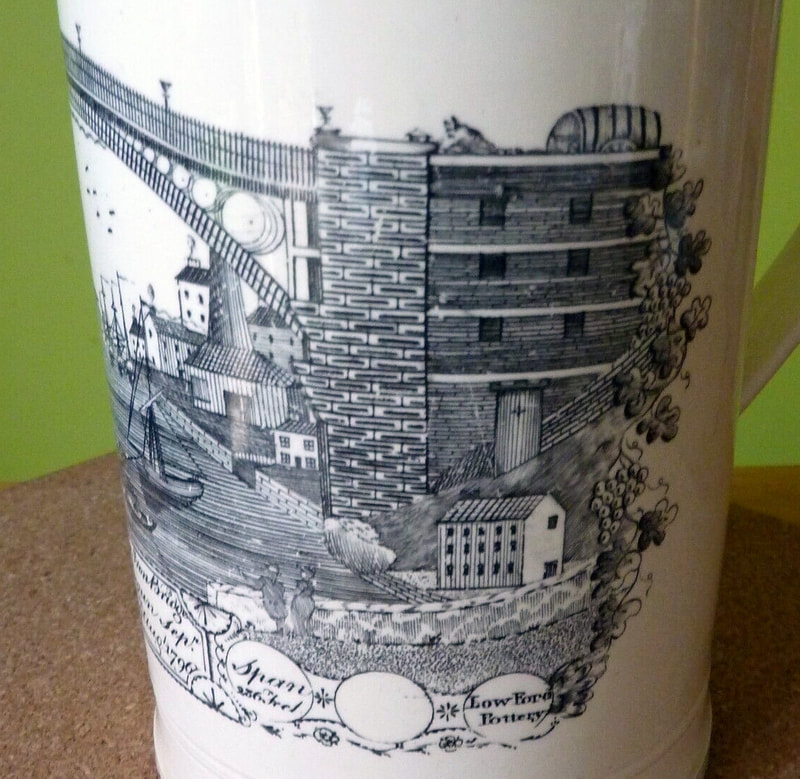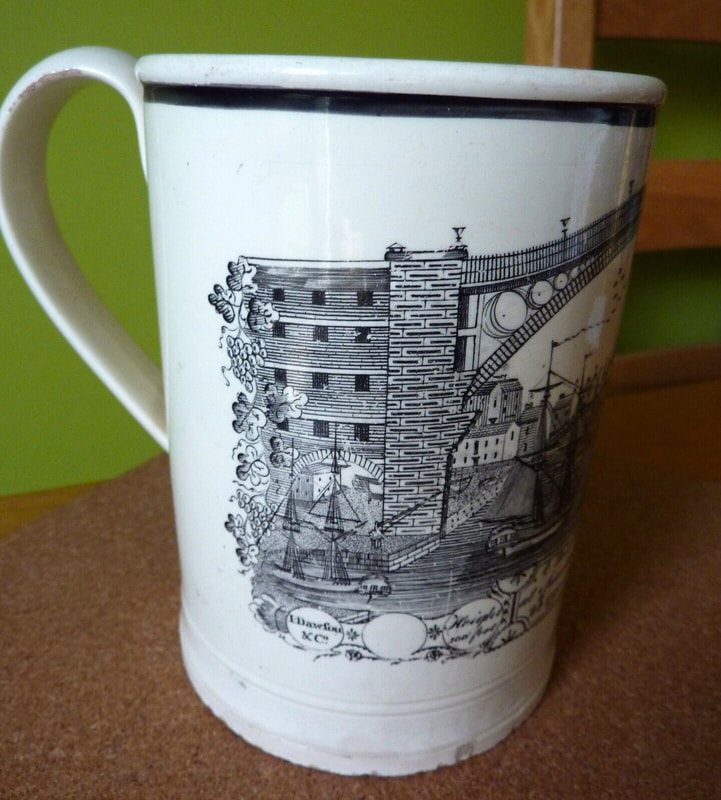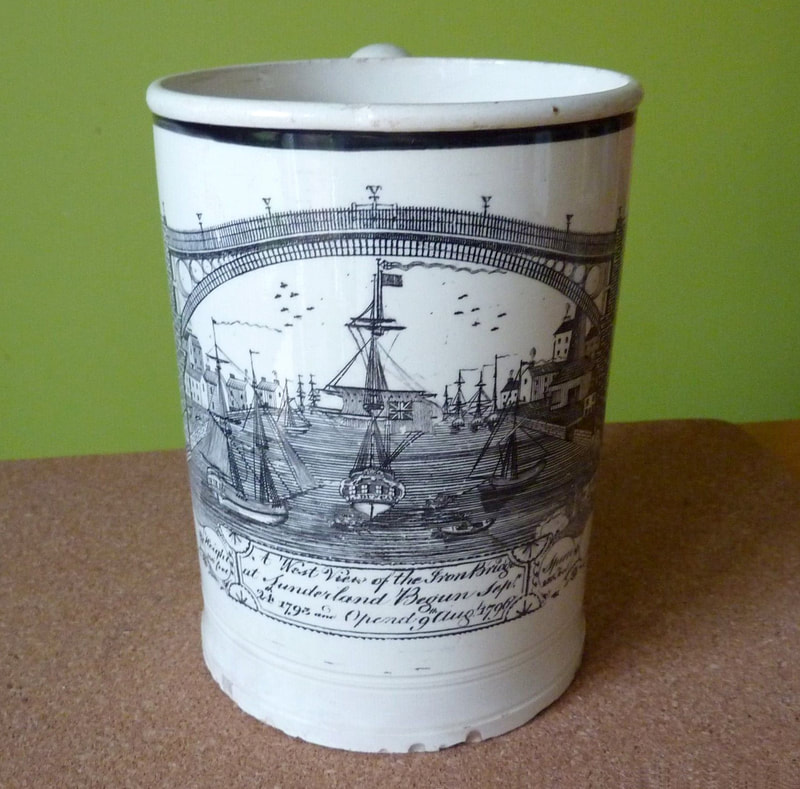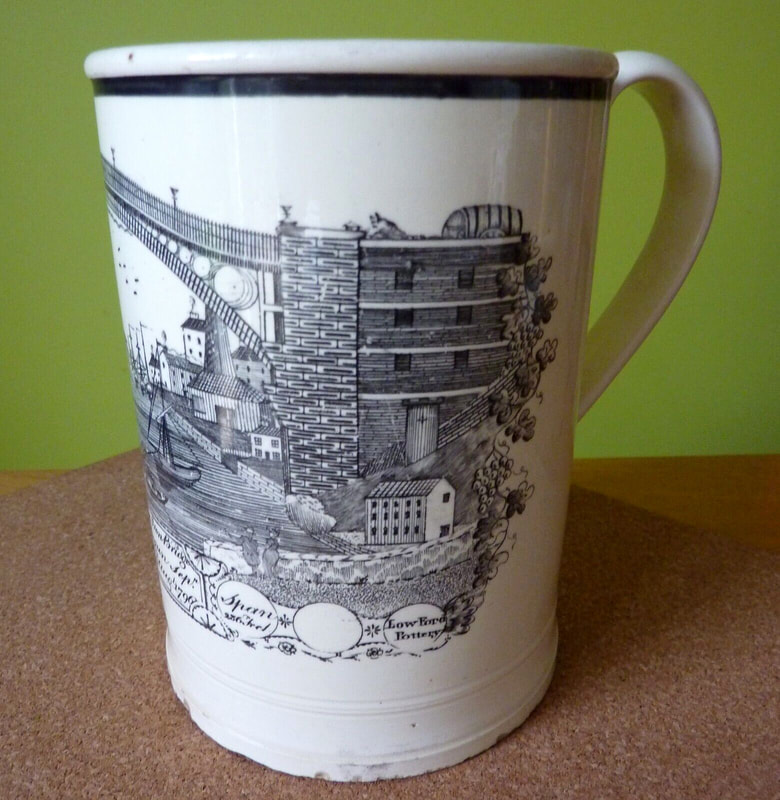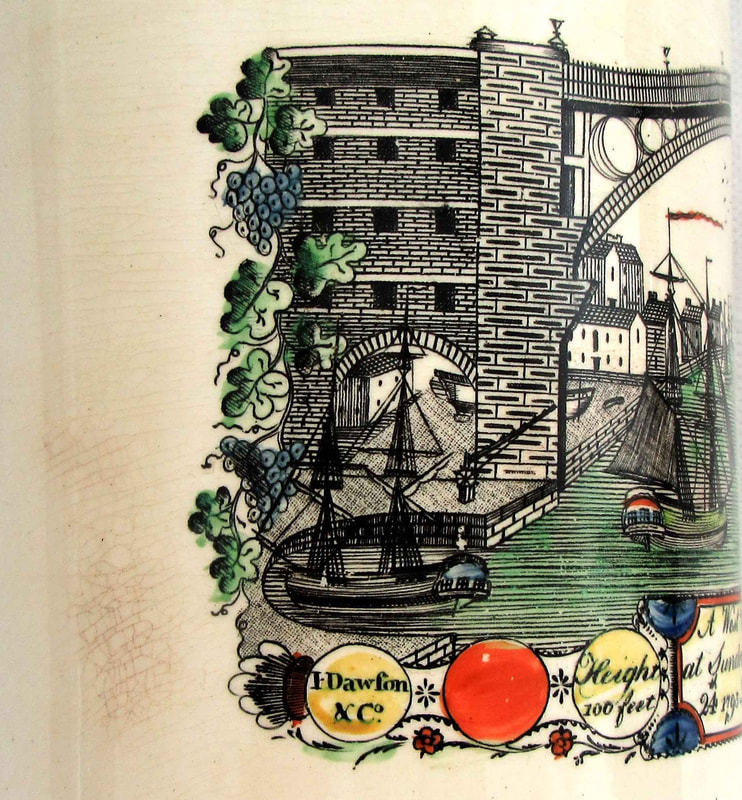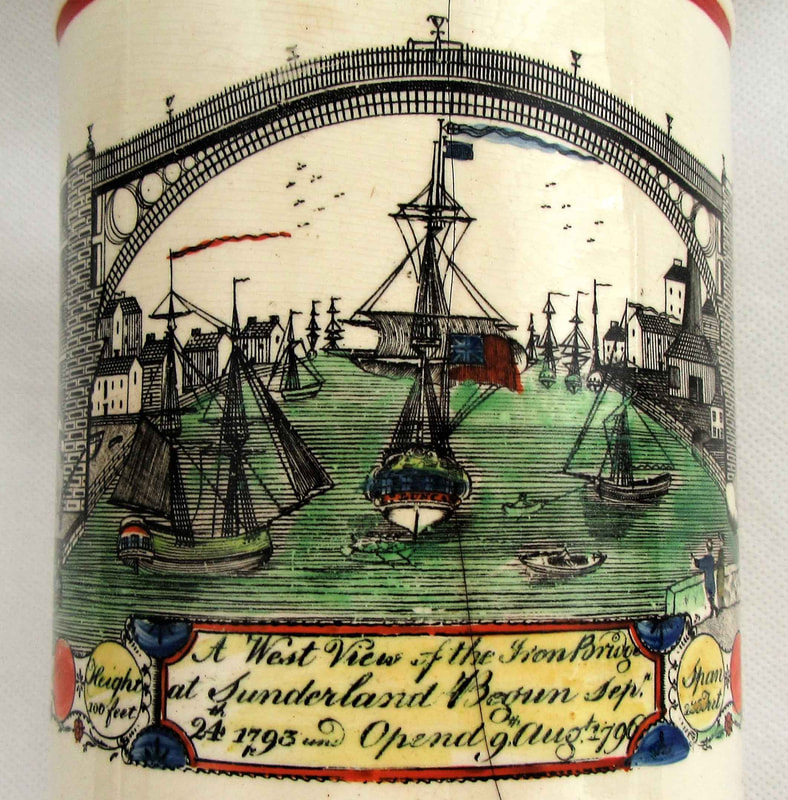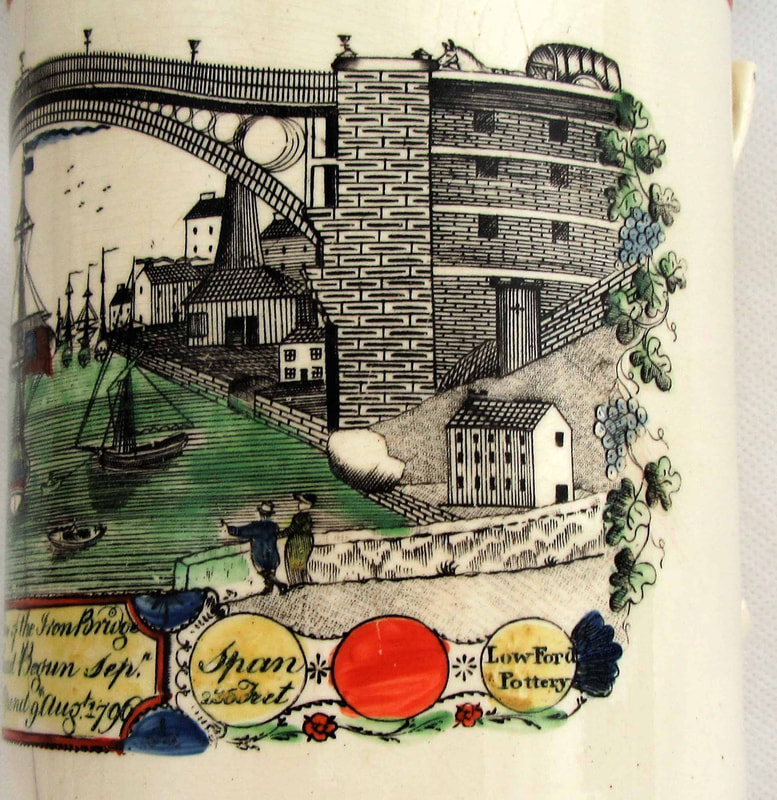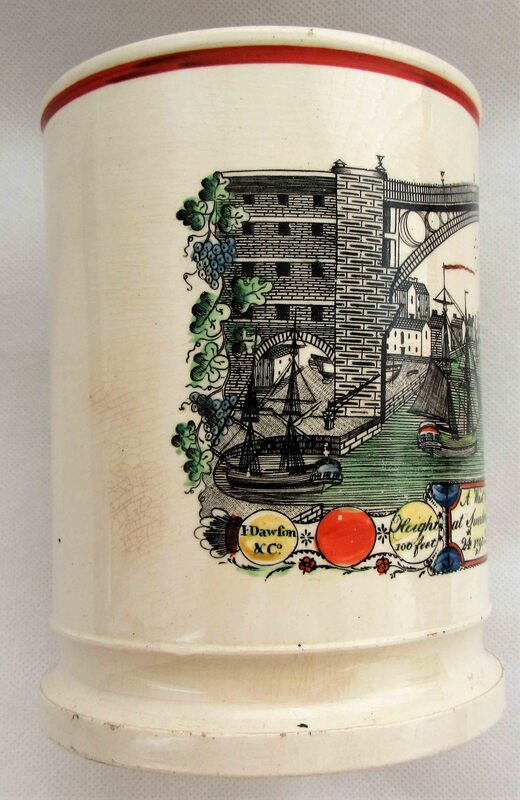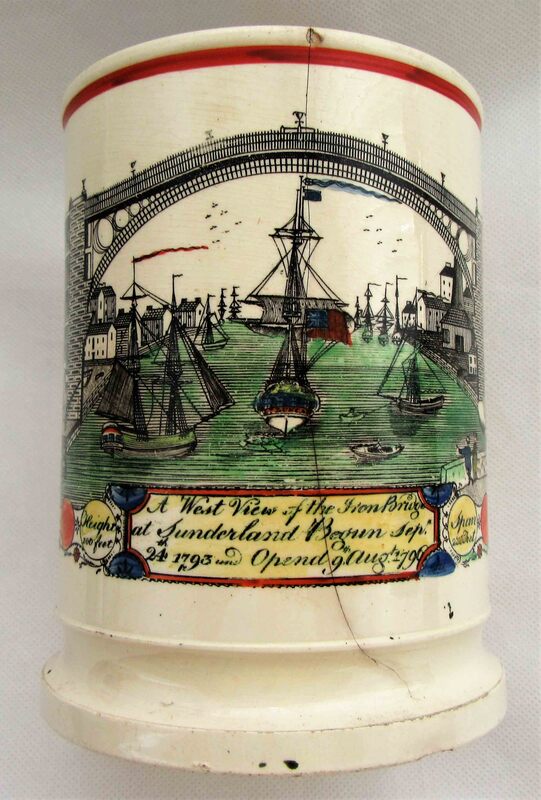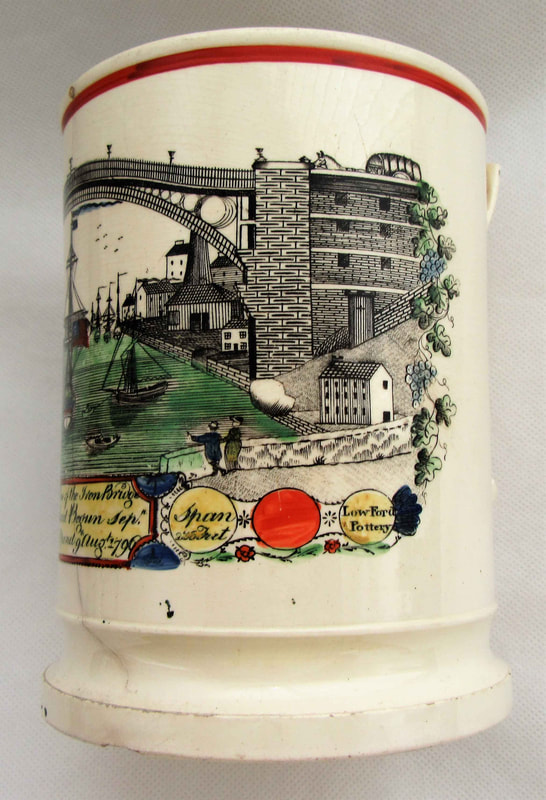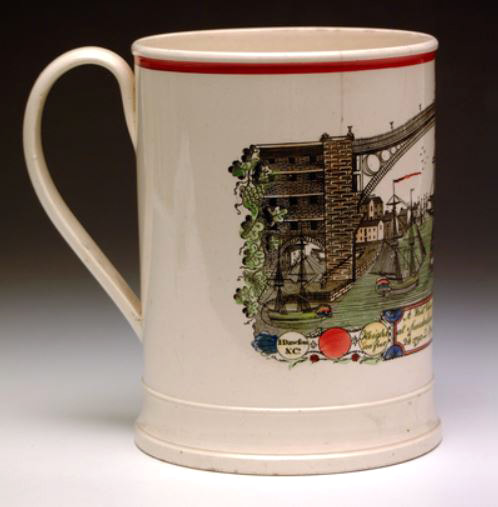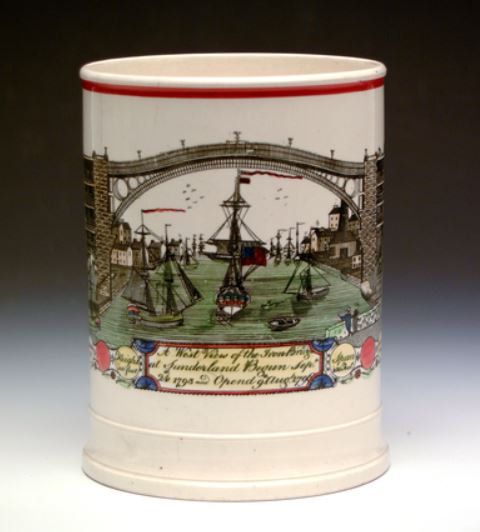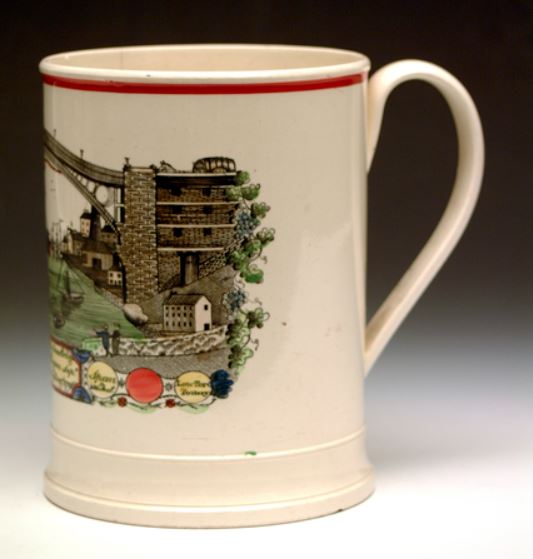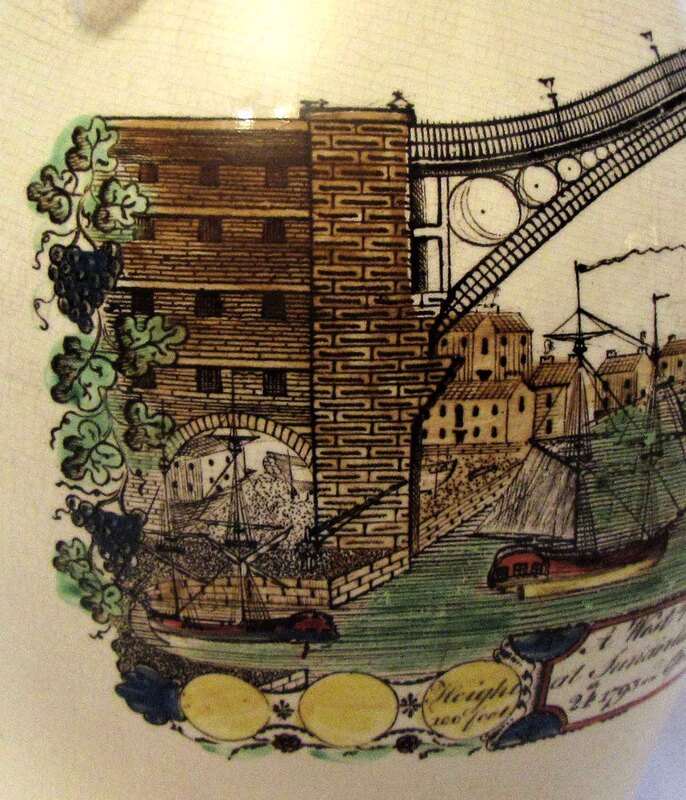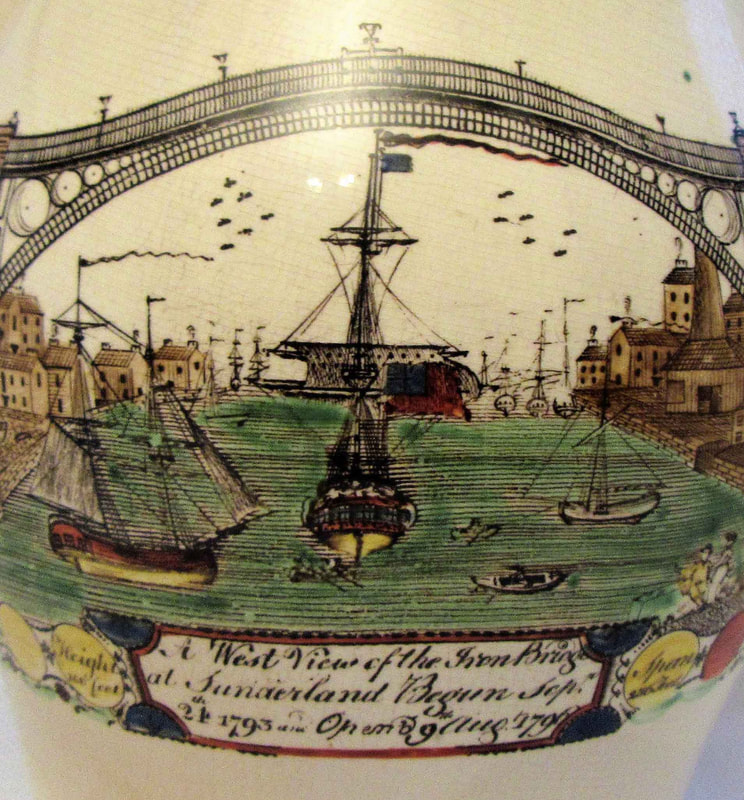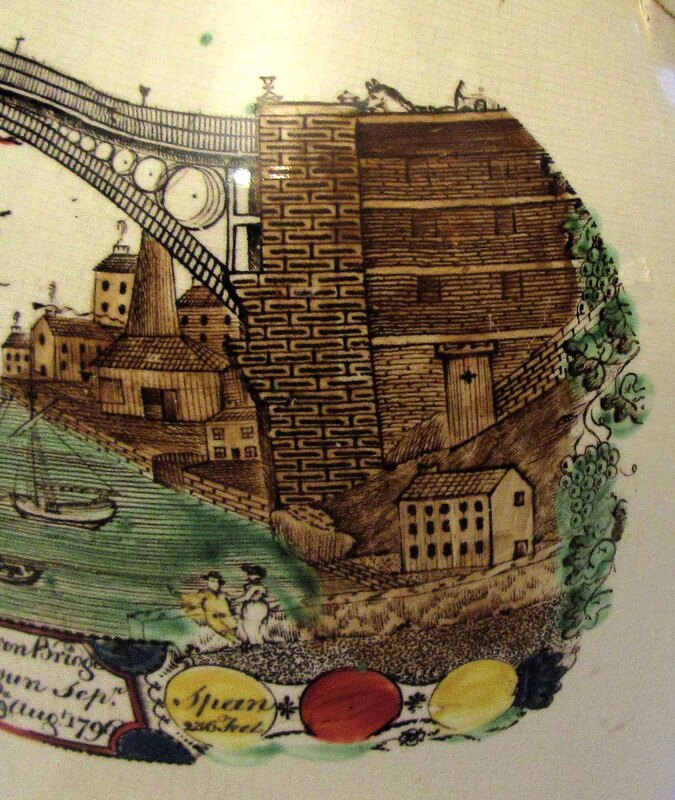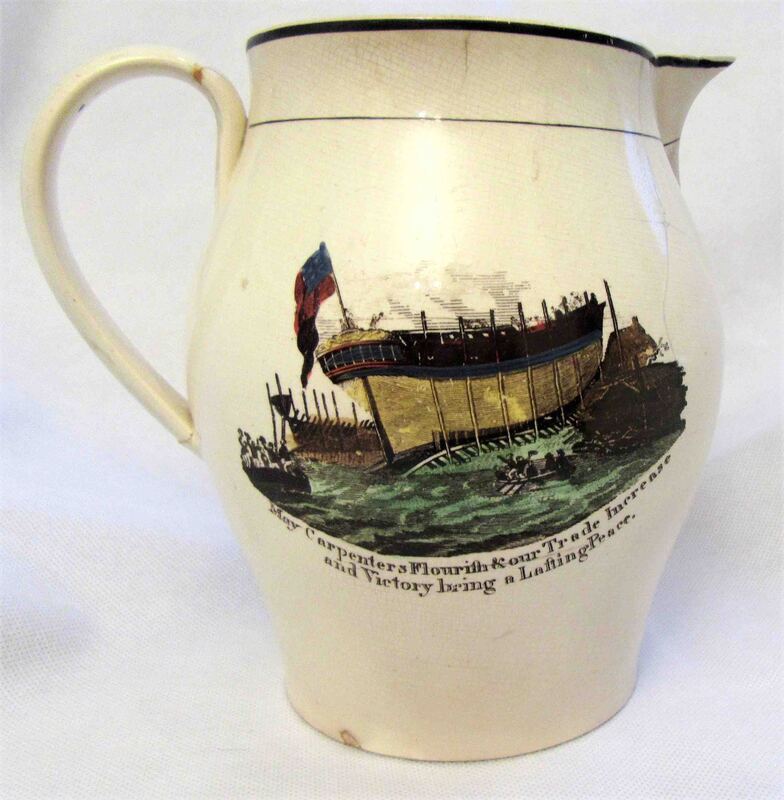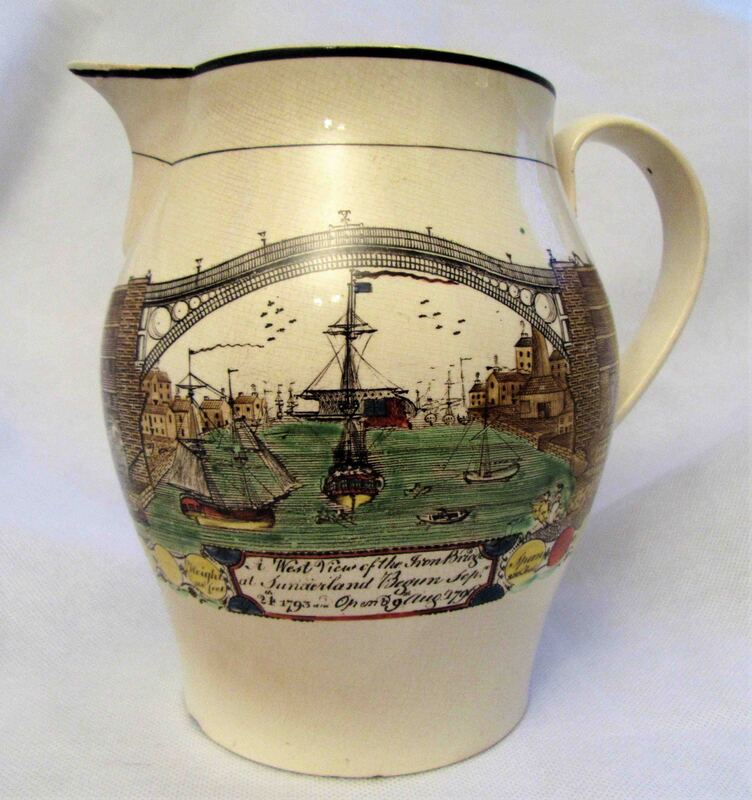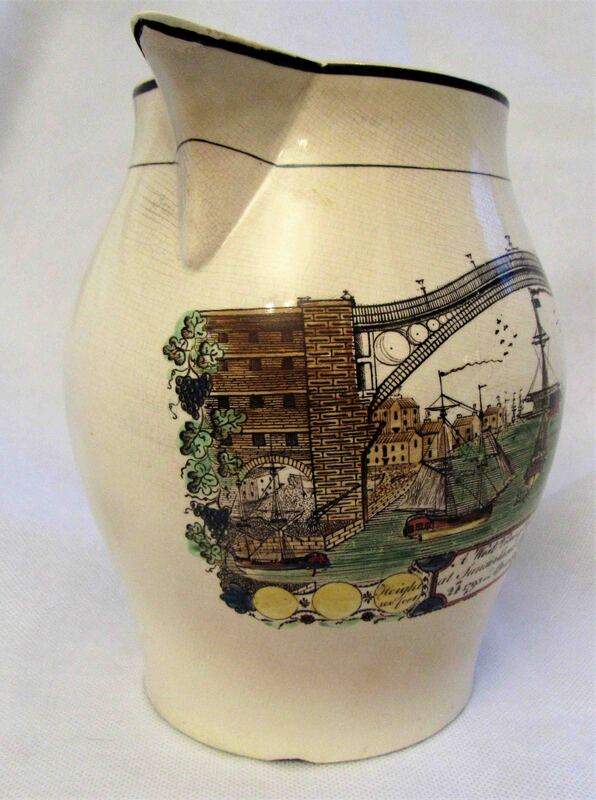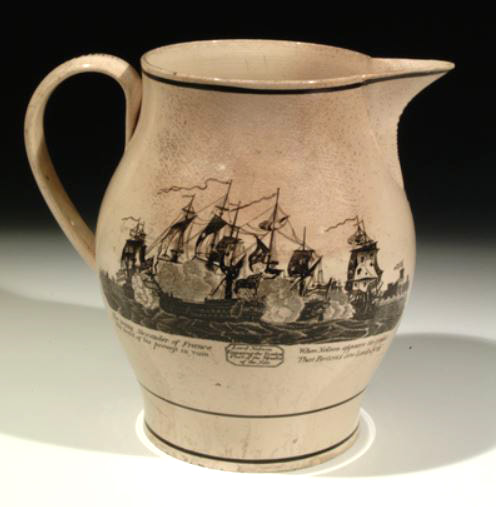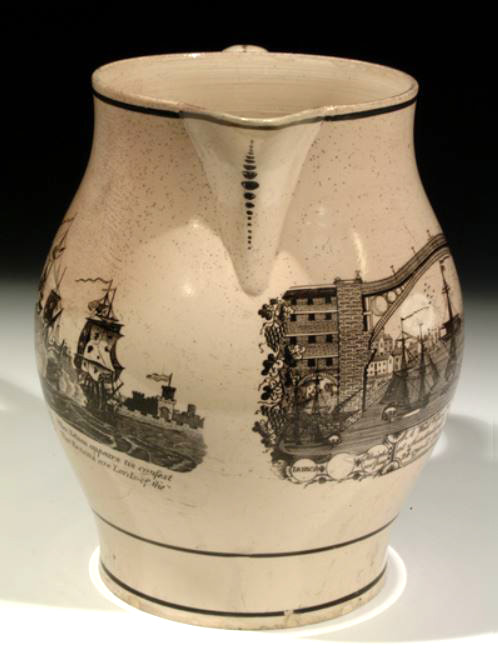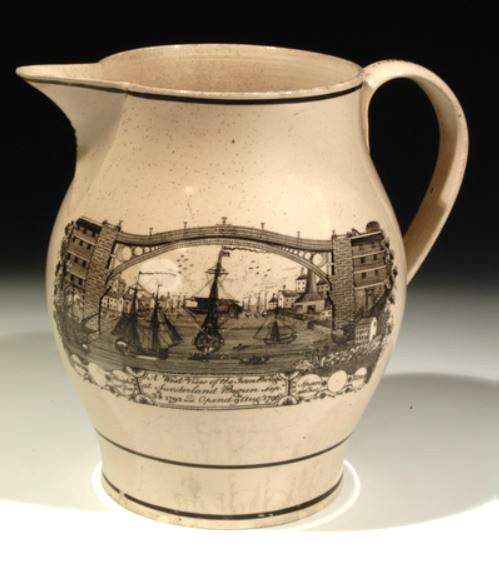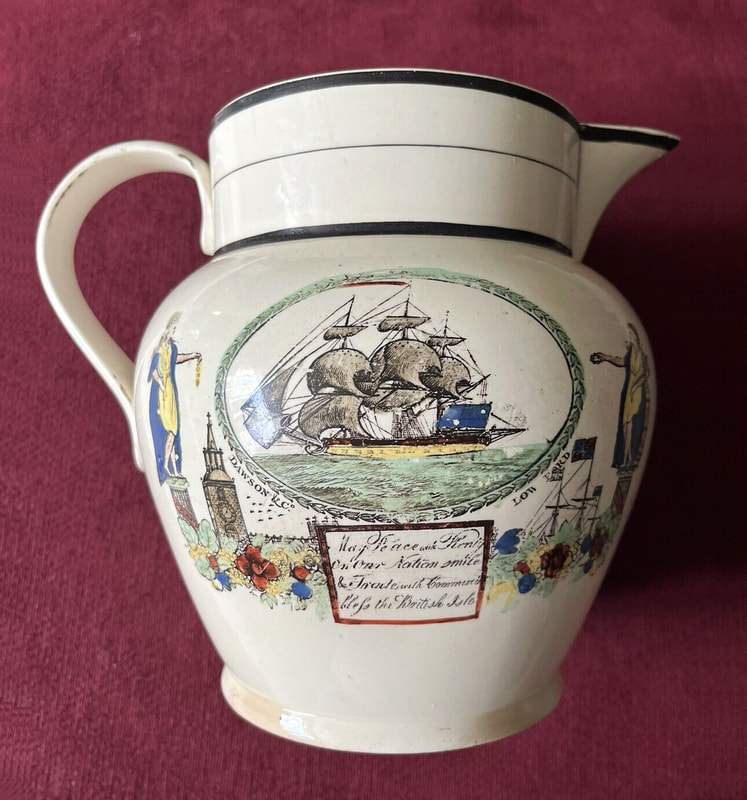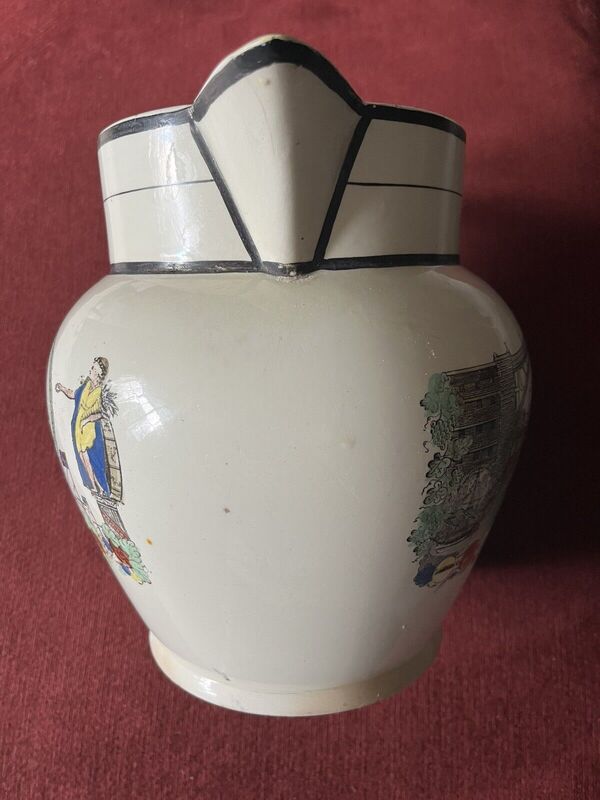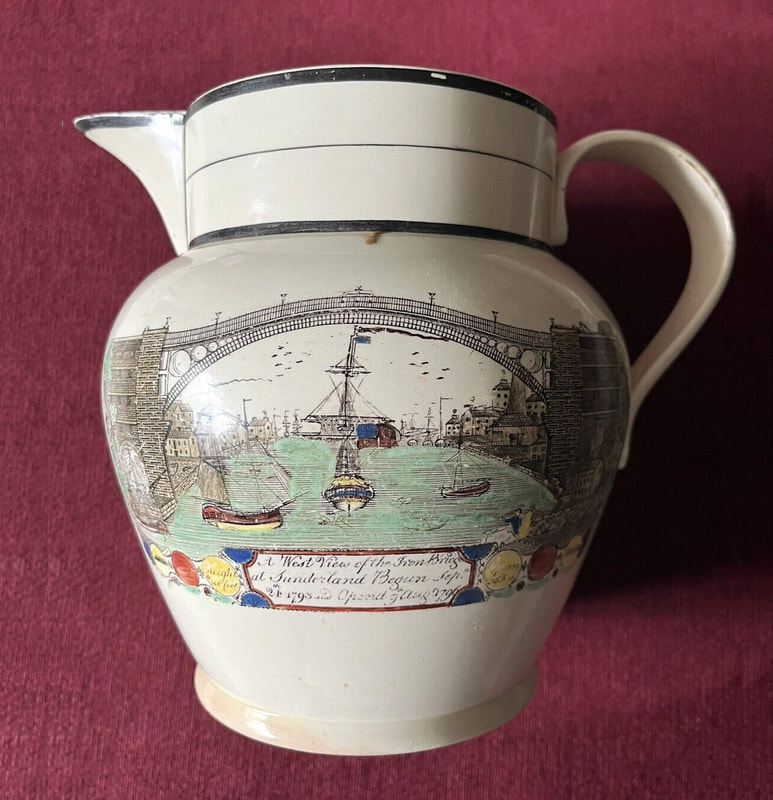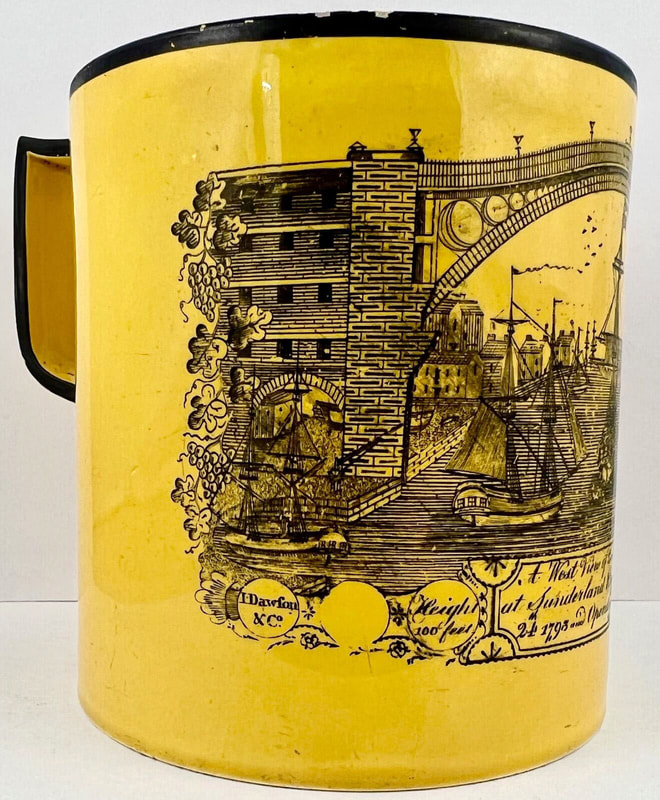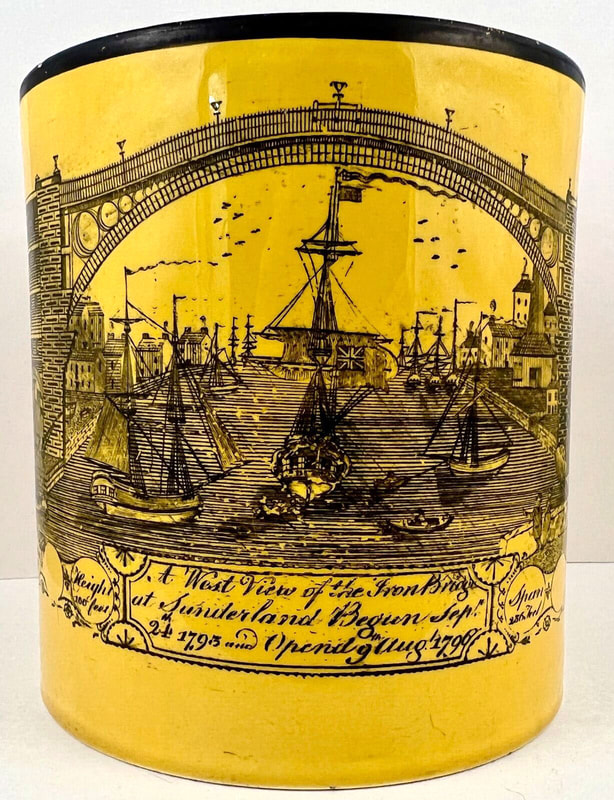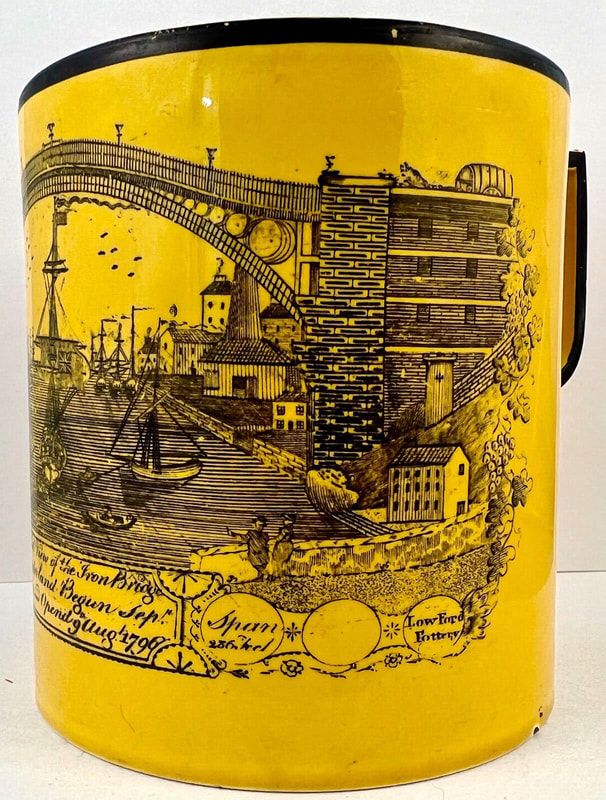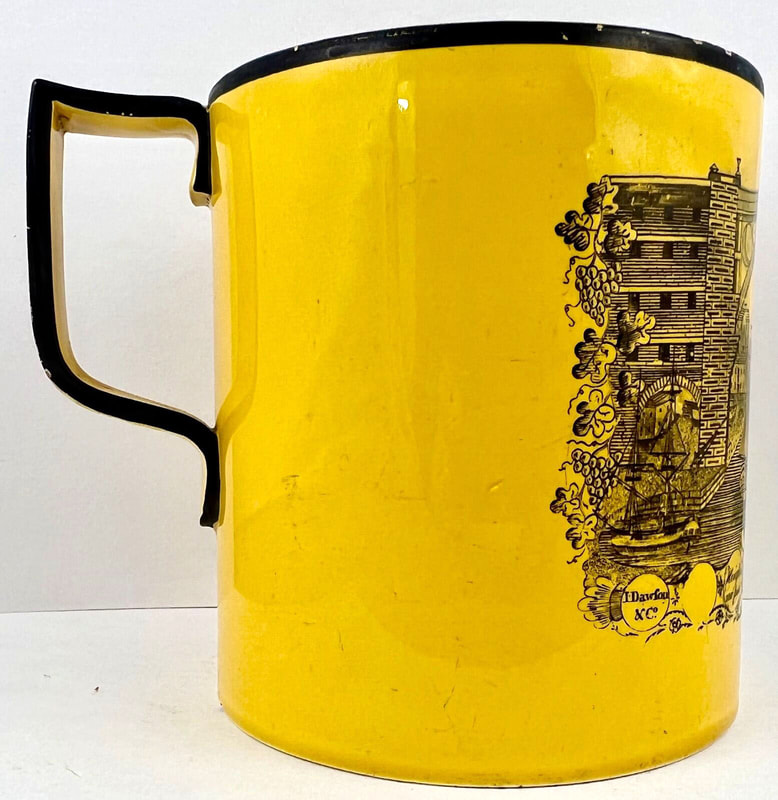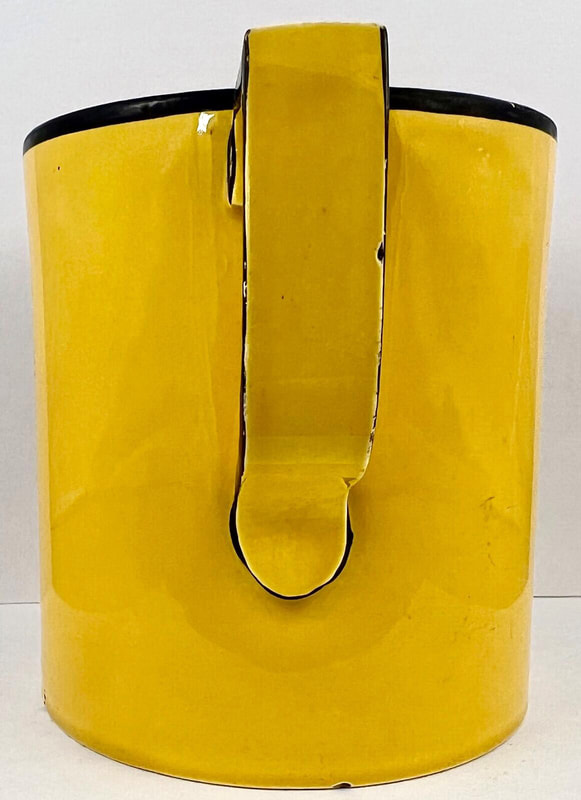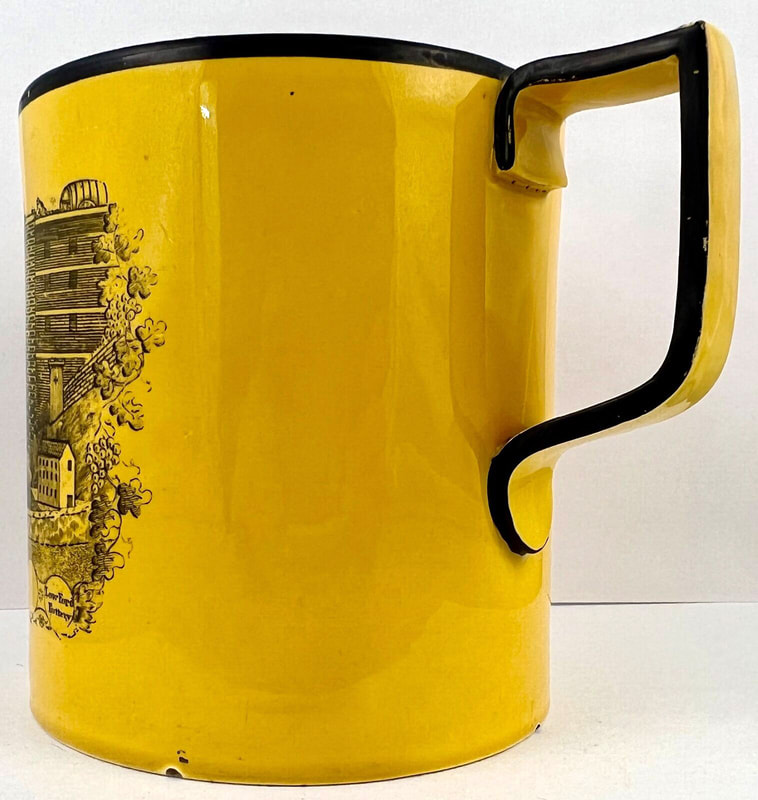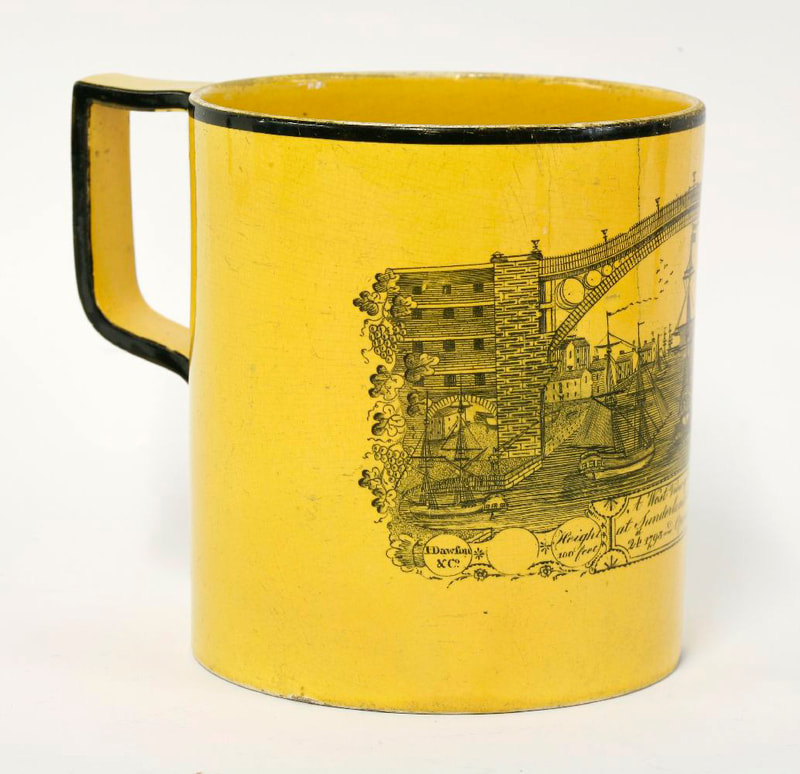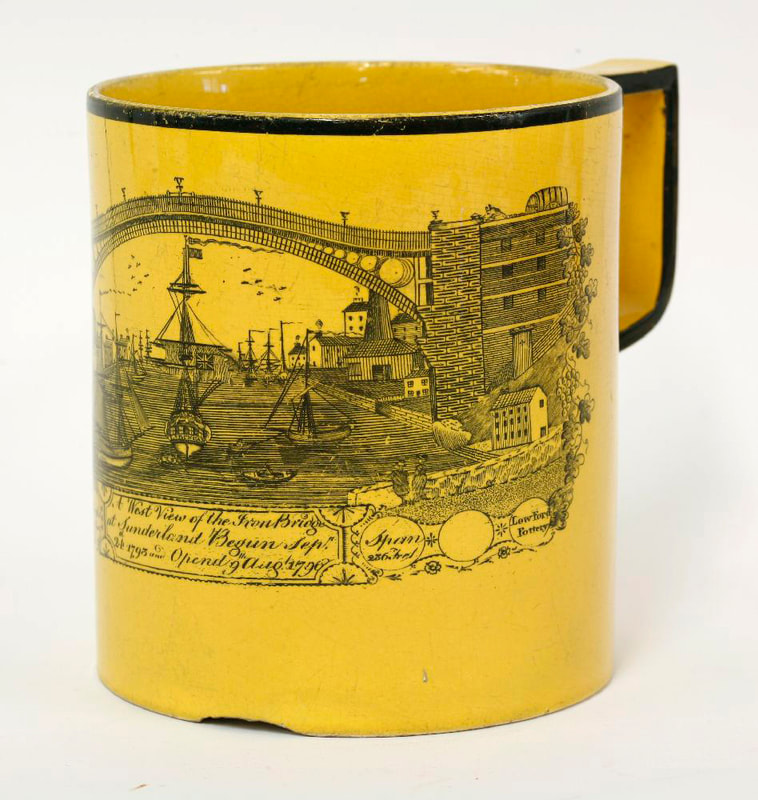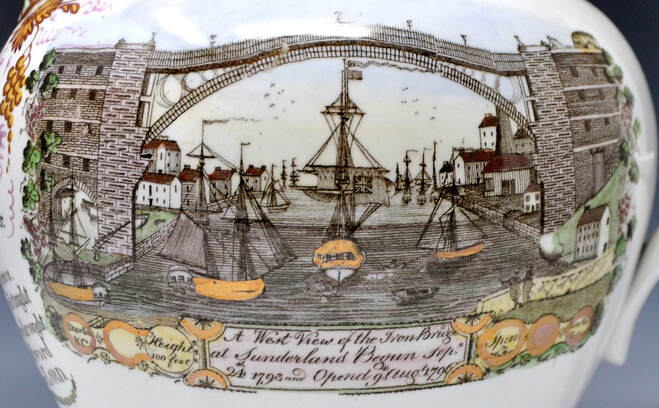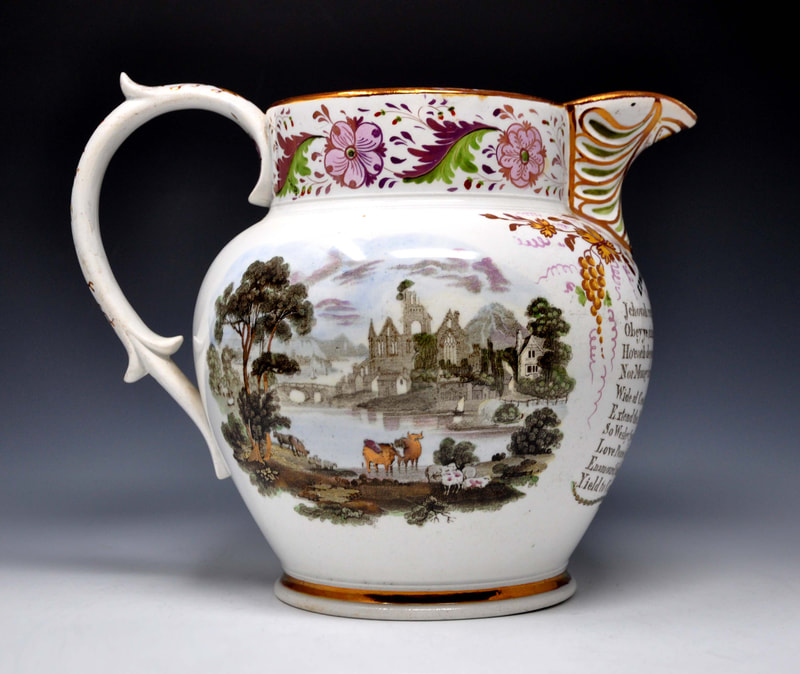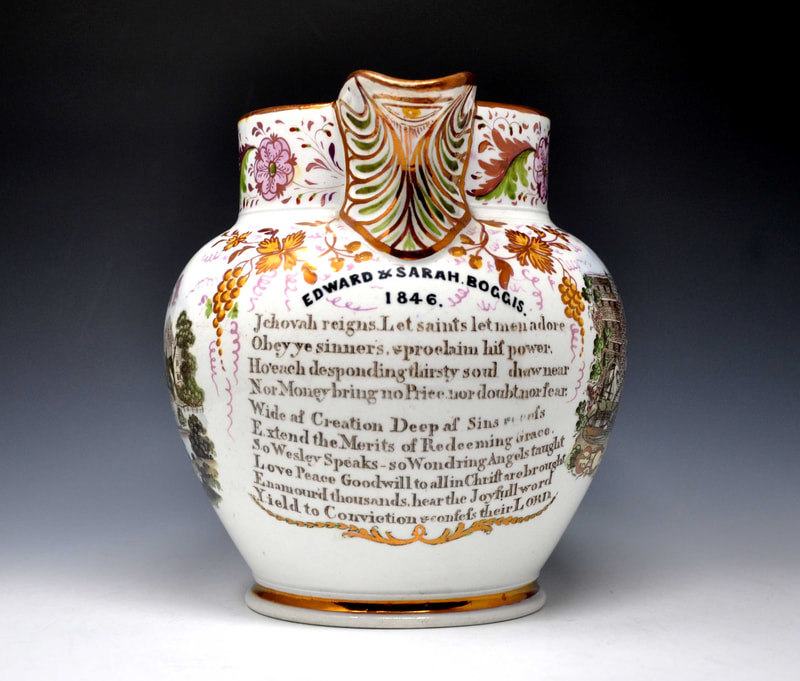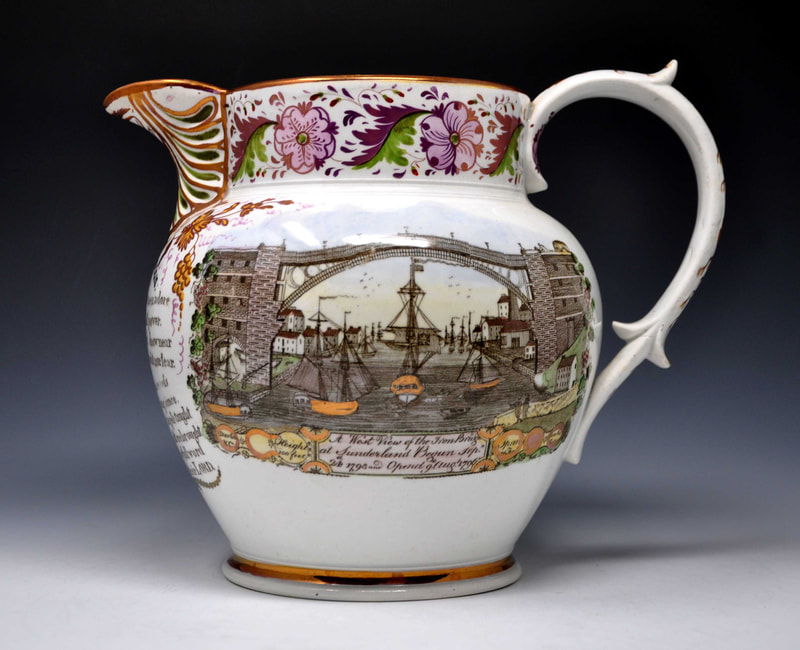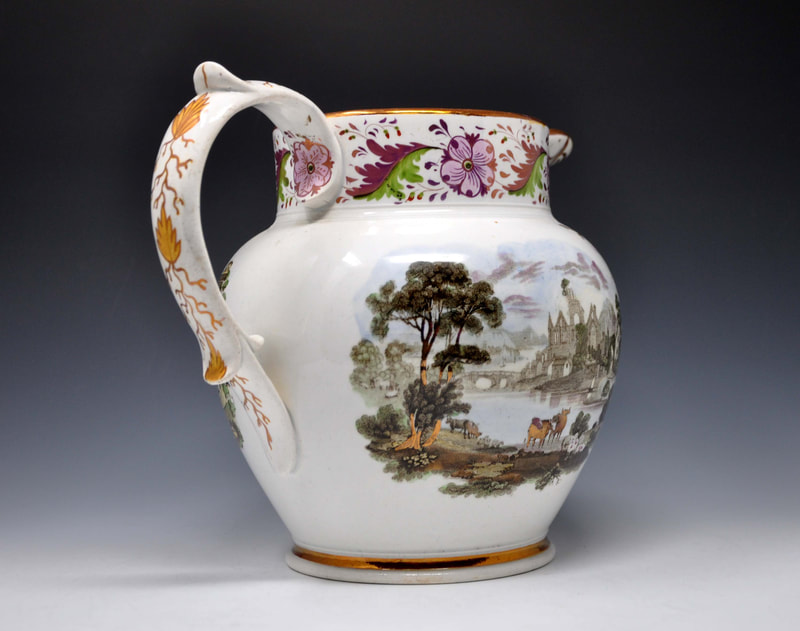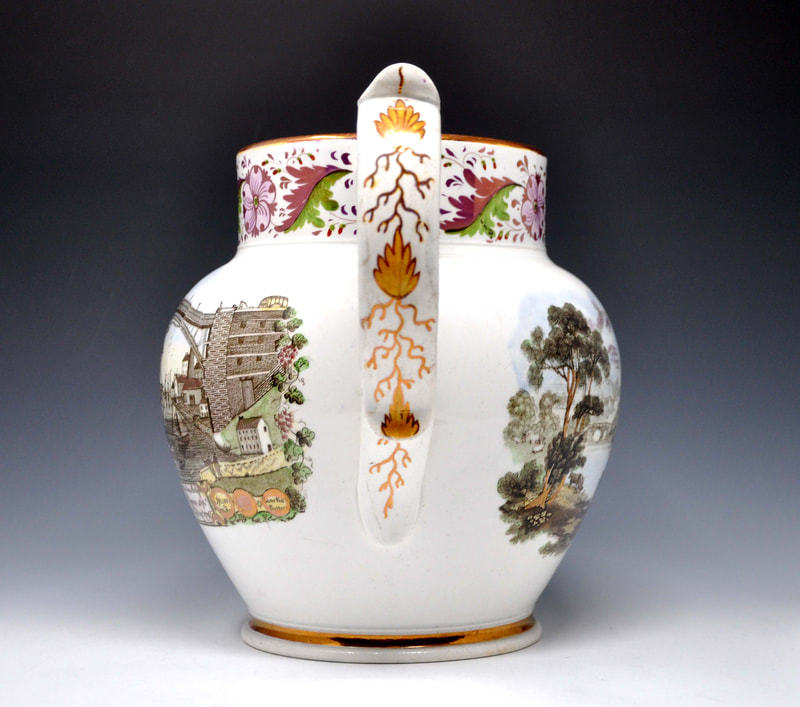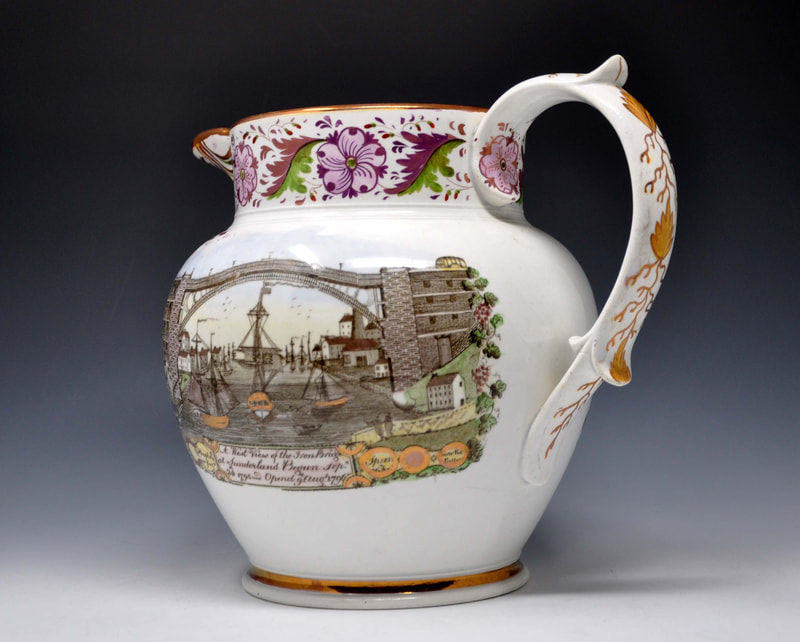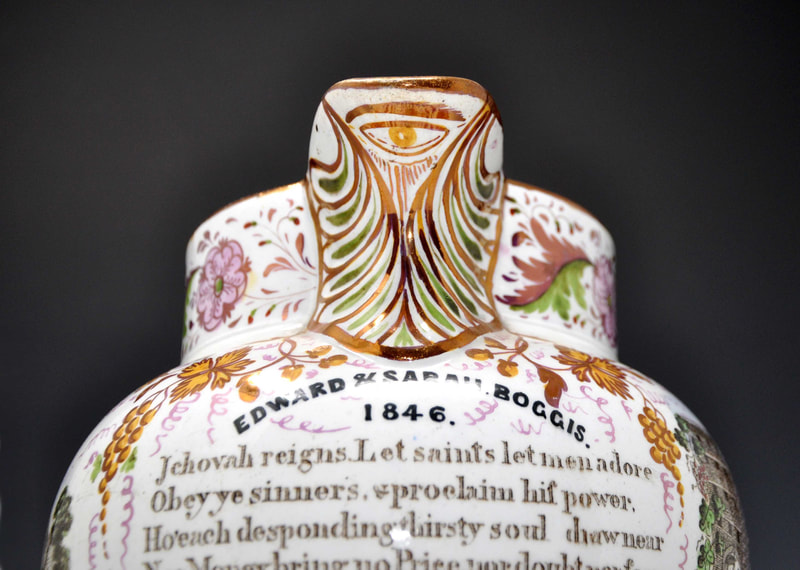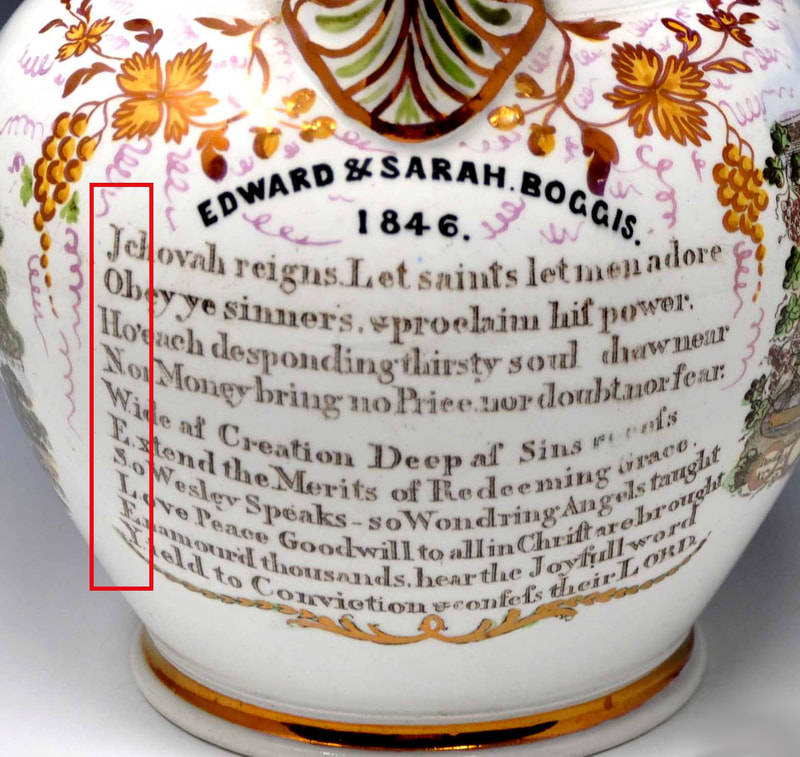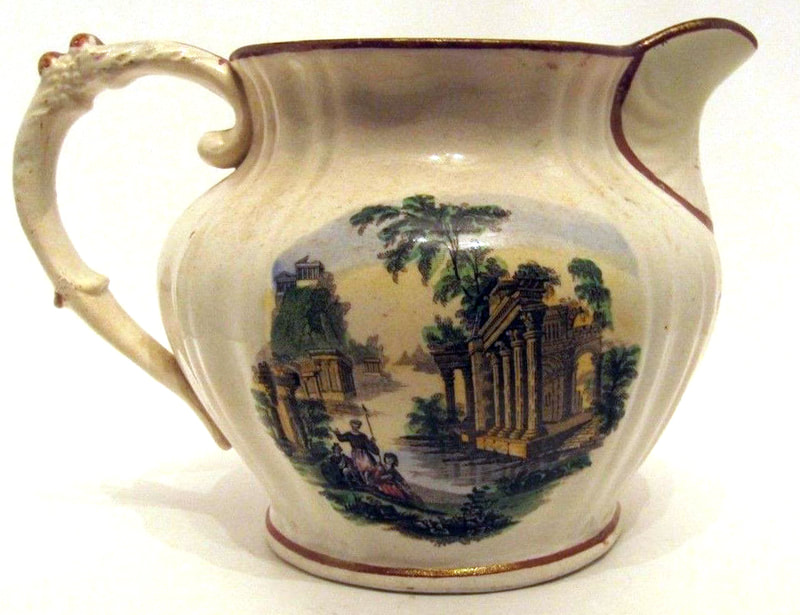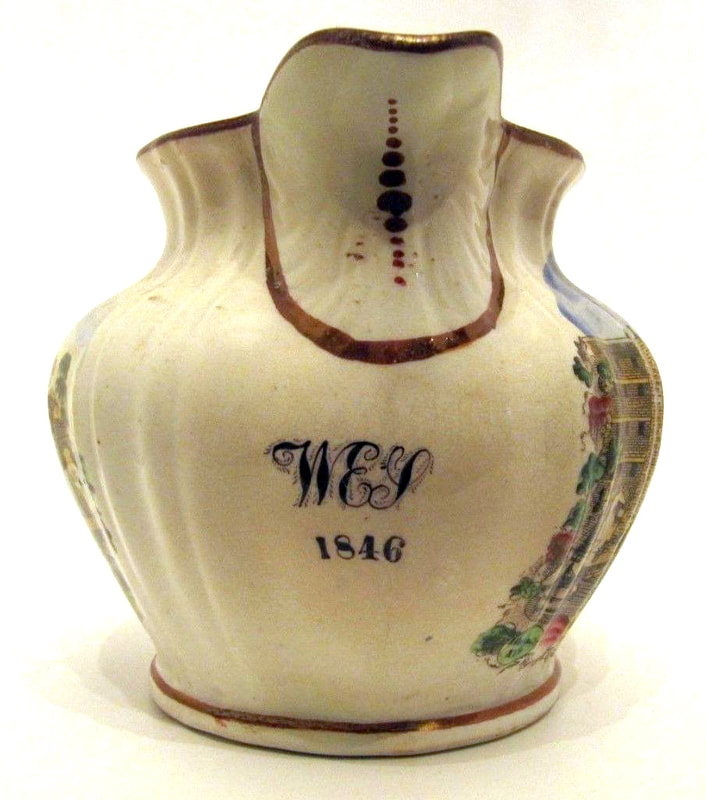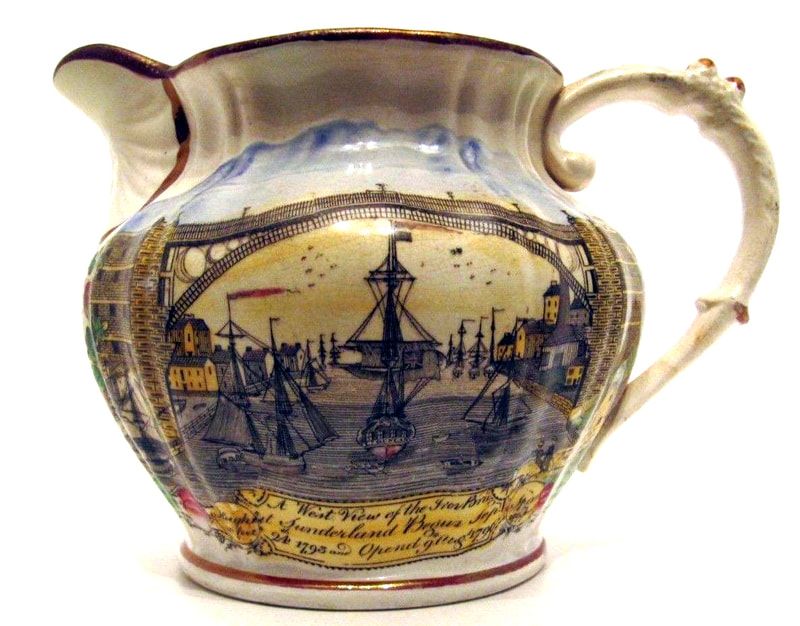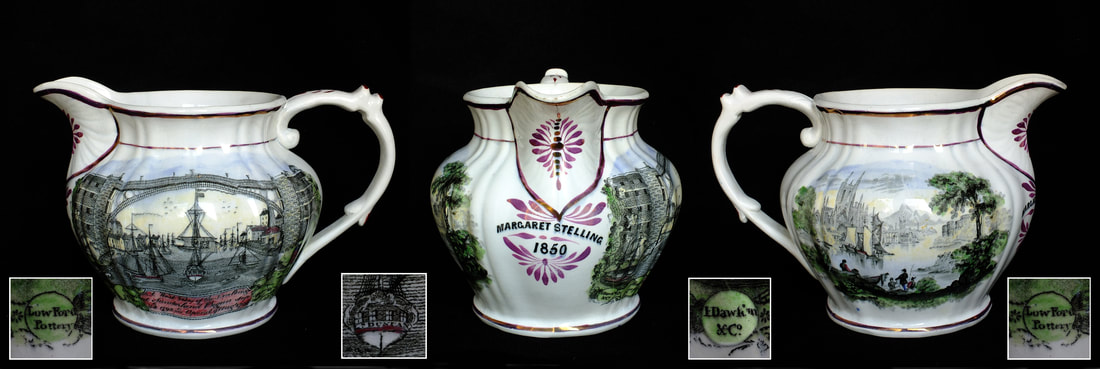West View of the Cast Iron Bridge – bridge 10
This view shows the Lord Duncan, the largest ship built in Sunderland at that time, passing under the bridge. The ship was launched in 1798, just a couple of years after the bridge opened. But any real acquaintance with the bridge would have been short lived, as she was blown up in 1807 by an explosion in San Domingo. However, images of the ship passing under the bridge continued to be used by Dawson, North Shields and Moore & Co into the 1840s and 50s.
Dawson, Low Ford Pottery – bridge 10 early imprint
This is an earlier (1805) incarnation of the transfer below. Note that the oval shapes to the far left and right of the title are blank. They would later be engraved 'J Dawson & Co' and 'Low Ford Pottery'. The Bridge is paired with 'Lord Nelson engaging the Toulon Fleet of the Mouths of the Nile', The Battle of the Nile was fought in 1798.
Dawson, Low Ford Pottery – bridge 10 later imprint
This is Baker's bridge 10, marked 'I. Dawson & Co, Low Ford Pottery'. This mug, like the others on this page, does not have a frog inside.
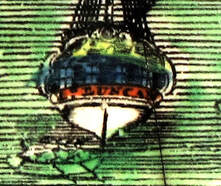
An exceptionally crisp later imprint with bright over-enamels. As with all the transfers on this page, the name of the ship, the 'Lord Duncan' can be seen on the ship's stern (see left). The ship was the biggest built in Sunderland at that time, so another source of local pride passing under the bridge.
The second larger mug below is from the Sunderland Museum & Winter Gardens, Tyne & Wear Archives & Museums collection.
The second larger mug below is from the Sunderland Museum & Winter Gardens, Tyne & Wear Archives & Museums collection.
These ovoid jugs were likely made before 1820. This one showing the launch of a ship on the reverse, and the verse 'May Carpenters Flourish'.
The jug below is from the Sunderland Museum & Winter Gardens, Tyne & Wear Archives & Museums collection, again with the Battle of the Nile transfer.
A jug of similar age and shape to the one above, decorated with hand-painted flowers.
Two canary yellow mugs with the transfer, and distinctive handles used by Dawson, again likely from before 1820.
It appears that the copper plate was taken out of retirement in the 1840s. Below, a large and exceptionally well decorated marriage jug with the transfer, and an inscription for 1846.
|
The jug has a couple of hidden features, not immediately obvious. Firstly, there's an all-seeing eye under the lip of the spout, looking down on the married couple. Secondly, as spotted by my friend, Ian Holmes, it has a 'John Wesley' acrostic. Each line spells out a letter from his name. Click on the images to enlarge. |
|
The transfer remained in use on slip-cast jugs into the 1850s.
